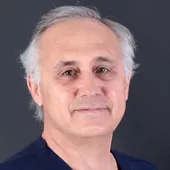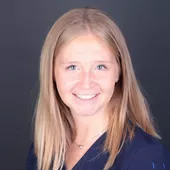When facing complex treatments, patients normally request minimally invasive procedures that can restore their overall health in the shortest period of time. With this in mind, meticulous planning and the convenient use of the right therapeutic tools is mandatory. Combining different treatment elements will lead to the best results. Proper implant selection, optimized surgery, intraoral scanning and a digitally ready prosthetic laboratory are only a part of these elements. The entire team should be trained in the optimal usage of these tools.
Since every patient is unique, we have developed different fully digital workflows to accommodate the patient situation, allowing us, in the case of fully edentulous patients, to restore them on the same day. All these protocols must be simple and easy if we want to apply them clinically on a daily basis.
In this case report, we show two of our workflows with the newly introduced Straumann® BLX Implant System. BLX offers an easy surgical protocol, achieving a high, safe insertion torque and convenient ISQ readings for immediate loading. The combination of Roxolid® and SLActive® bring us peace of mind for immediate loading treatments. Unlike any implant we’ve worked with to date, it’s more than an implant. For us, it’s a tool that fits perfectly in any type of surgical protocol. In addition, it allows us to follow a fully digital approach, giving us the freedom to apply our protocols.
So, as demonstrated with this case, the Pro Arch treatment, from the initial temporary full-arch bridge to the final monolithic zirconia bridge, could not be more predictable or simpler for the patient and for us.
Initial situation
An 87-year-old patient was referred by his medical doctor with advanced chewing problems, causing weight loss and social impairment. An initial consultation revealed an old mobile bridge on the anterior maxilla with failing dentition and pain. The patient refused to use his old partial denture, and he and his family requested a fixed solution to improve his oral and overall health.
Treatment planning
A panoramic x-ray was taken to evaluate the bone availability, disposition and density (Figs. 1-2). After discussing the different treatment options available, a staged implant treatment with a same-day fixed temporary restoration was the first choice for both the dental team and the patient.
With the aim of improving the patient’s situation from the first day, this staged treatment included three different treatment stages:
Stage 1:
Removal of failing dentition, placement of four BLX implants in the edentulous areas of the maxilla and same-day restoration with a fixed PMMA full-arch temporary bridge produced in a fully digital workflow with the intraoral scanner.
This treatment was designed to improve the patient’s situation dramatically with a same-day fixed prosthesis, thus allowing our team to continue with the next steps to reach the final prosthesis while the patient continues to benefit from a fixed solution from the very first procedure.
Stage 2:
Because of the expected long span between the two most mesially planned implants, a second surgery was planned to place two more BLX implants in the anterior sites, taking the expected total number of planned implants to six. Because of the two additional implants, a second full-arch temporary bridge was to be milled and placed on the six implants at this stage.
Stage 3:
If, as expected, this final temporary fulfilled both the patient’s and the team’s expectations, the patient was to be restored with a final monolithic zirconia full-arch bridge on six implants copying all the information, functionality and esthetics contained in the final full-arch temporary prosthesis.
Surgical procedure
Stage 1:
The i2 standard technique was used.
Before starting the surgery, a digital model was obtained via intraoral scanning and sent to the lab as the patient’s original file (File 1). This file contained details of the preoperative situation, including the teeth, and all the information regarding esthetics, vertical dimensions and occlusion.
The surgery was performed under local patient-controlled anesthesia, supervised by an anesthesiologist using conscious intravenous sedation with midazolam and pulse oximetry monitoring.
With the bone anatomy, availability and expected density as reference, the final implant locations were selected. With the aim of minimally invasive treatment, only small cylindrical mucosal “tissue punches” were removed where the implants were to be placed using the mucosa extractor drill (Figs. 3-4). The implant beds were prepared at 800 rpm with continuous saline irrigation, maintaining parallelism between all the implants. Only the ∅ 1.6 mm needle drill, the ∅ 2.2 mm no. 1 drill and the ∅ 2.8 mm no. 2 drill were used to reach the desired implant insertion torque values. Step drilling was performed using only 50% (4-8 mm) of the ∅ 2.8 mm drill (Figs. 5-7). Three BLX 4.5 ∅ x 14 mm and one BLX 4.5 ∅ x 16 mm implants were placed, all implants reaching their final positions with torque values above 40 Ncm (Figs. 8-14). ISQ levels were recorded at implant level with the Osstell instrument. Adequate ISQ values for immediate loading were recorded, ranging from 66 to 74. Straight screw-retained abutments (SRA) were connected to the implants, and a second ISQ measurement, at abutment level, was recorded (Figs. 16-19). This gave us the possibility to extrapolate future ISQ levels at SRA level from the initially recorded abutment-implant ISQ values.
SRA scan bodies were connected to the SRA abutments (Fig. 20). A copy of the study model scan was produced for the final scan file. On this copy, the whole upper scan was erased, and a new scan was taken with the scan bodies (Fig. 21).
This file was sent to the dental laboratory, which used both files, the study model file and the scan body file, to design and mill a temporary full-arch bridge from a block of Ivoclar Telio CAD (PMMA) and connect this directly to the SRA abutments (Figs. 22-25).
Meanwhile, failing teeth were removed (Fig. 26).
The bridge was placed two hours after the end of surgery, and the patient left the office with a fixed full-arch temporary bridge (Figs. 27-30). The patient received postoperative instructions as well as the medication prescription.
Stage 2:
45 days after the initial surgery, the temporary bridge was removed and two more BLX implants were placed with the desired implant insertion torque of 40-80 Ncm (Figs. 31-38). Straight SRAs were connected to the newly placed implants (Figs. 39-40). The ISQ levels for the implants and SRAs were satisfactory (ranging from 66-75).
After connecting the SRA scan bodies to the six SRAs, a new intraoral scan of the upper maxilla was recorded, and the file was sent to the lab (Figs. 41-42). By means of the i2 device and workflow, a new full-arch bridge was designed and milled from a block of Telio CAD. The bridge was placed two hours later, this time on the six implants. (Fig. 43).
Stage 3: Final Full-Arch Bridge – Prosthetic Treatment
After checking for satisfactory occlusion and esthetics and after consulting with the patient, the simplest approach was selected for the final bridge. Once all the dental and social parameters were approved, the lab received the order to mill the same file in monolithic zirconia. No modifications were made to the prosthesis design, apart from the use of Straumann® Variobase® for the bridges.
Two different full-arch bridges were milled:
- Bridge A was milled in Ivoclar IPS e.max ZirCAD MT Multi, finished and painted by means of the ZirCAD coloring system (Figs. 44-52).
- Bridge B was milled in Ivoclar IPS e.max ZirCAD MT, with slight modification of the teeth anatomy and pink porcelain (Figs. 53-55).
No model was necessary to finish the prostheses.
A perfect fit of both prostheses was observed, and bridge A was selected as the final rehabilitation based on the patient’s age, overall esthetics and a low smile line. No additional modifications were needed. Occlusion and contact points were perfect.
A final panoramic x-ray was recorded (Fig. 56).
Two days after delivery of the final prosthesis, a new IO study model scan of the patient was recorded with the final restoration in place. Using the clearance tool in the TRIOS software, we were able to check the contact points and occlusion with the final bridge, helping us to diagnose possible overloads on the final bridge (Figs. 57-63).
Hygiene instructions regarding bridge cleaning and maintenance were also given to the patient.
Treatment outcomes
The most important facts contributing to the success of this treatment were:
1. Fully digital from the IO.
2. Minimally invasive surgery with BLX, an implant designed specifically for immediate loading.
3. Model-free. No conventional impressions.
4. Fulfillment of all of the patient’s expectations and the team work that enabled the immediate delivery of the temporary prosthesis.Thanks to a fully digital approach, it was possible to produce a final monolithic zirconia restoration made with the same file from the final temporary bridge (only slightly modified to accommodate the Straumann® Variobase® for bridges).
Only three appointments were needed to complete the treatment. The last patient appointment only involved the removal of the temporary bridge and placement of the final bridge.
5. The final prosthesis is a copy of the final temporary prosthesis, saving a lot of time, effort and costs.
Minimally invasive surgery with an immediate fixed temporary restoration eventually resulted in a model-free full-arch monolithic zirconia final bridge. This treatment could only be done thanks to a fully digital approach with the intraoral scanner and the use of two of our workflows, the i2 standard and the i2 device workflows.
Furthermore, the new BLX Implant System is the perfect tool for immediate loading. The new macroscopic design allows better and safer implant insertion, while maintaining adequate insertion torque and perfect ISQ levels. The SLActive® surface helps to optimize the bone-implant interface, promoting osseointegration. From the prosthetic perspective the new one-piece SRA is more convenient to use and, thanks to its new shape, kinder to the soft tissues.
This new implant fits perfectly in our different workflows for fully digital, full-arch same-day immediate restorations under the Straumann® Pro Arch concept.
































































